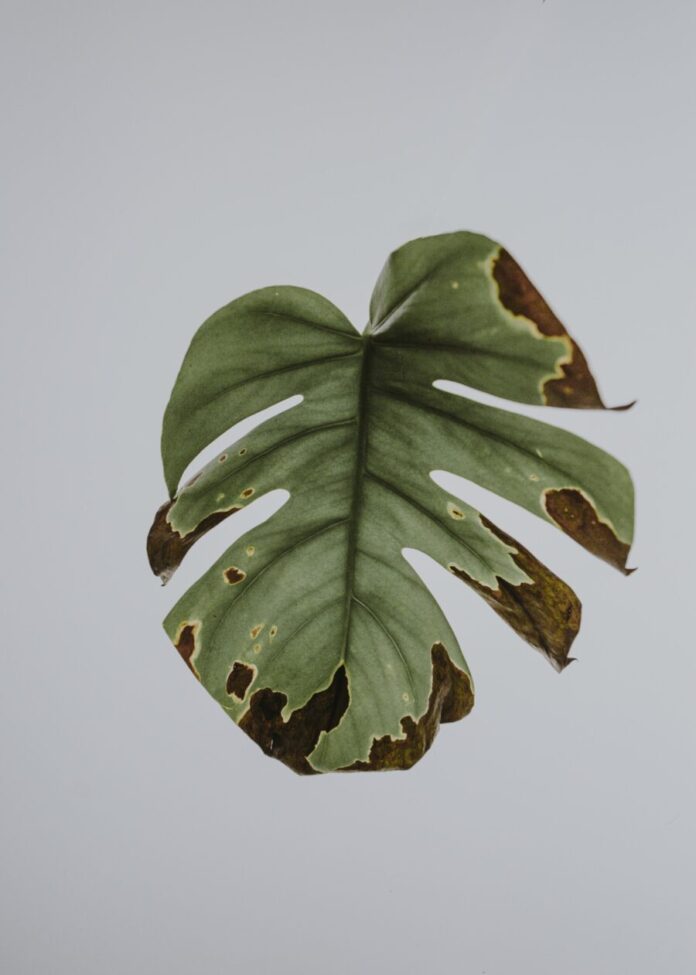
Plants are an important part of our nature and surround us everywhere. They not only decorate our lives but also play an important role in maintaining ecological balance. However, plants are also susceptible to various diseases that can cause them significant harm. Plants, like all living organisms, sometimes get sick. This is also true for indoor specimens because they are grown in an artificial climate and have limited space for roots. In this article, we will look at the most common plant diseases and also mention the importance of caring for plants and preventing the spread of these diseases. Pests can get to a houseplant in several ways: you may have already acquired an infected or infected plant. Once in an apartment, the pests multiply and, in the worst case, spread to other plants as well. If you’re a plant lover, you might know how stressful it can be when plants get sick. Diagnosing sick plants correctly is necessary to provide them with the right treatment. Luckily, you don’t have to know everything. Use a plant care app by PLNT to identify plants and cure common plant problems. The app is the best assistant you can have if you want to have your own home garden.
Why do home plants usually get sick? Diseases of indoor plants can be provoked by bacteria, viruses, fungi, as well as insect pests. Let’s take a look at the most common factors that can cause plant diseases:
- Excess dosage of fertilizers;
- Too much water for watering;
- Incorrect temperature, hypothermia;
- Planting in contaminated ground without prior disinfection;
- Watering with rain or river water;
- Stagnation of water in the pan;
- Poor lighting.
However, usually, at the very beginning, the spread of the disease is quite easy to stop. To do this, you just need to isolate the affected flower from others and treat it with special means. But if measures are not taken in a timely manner, then a real epidemic begins among indoor crops, which will not be easy to stop.
Now, let’s move on to the most common plant diseases.
Fungal infections
Fungal infections are one of the most common plant diseases. They can cause wilting, leaf spotting, and root rot. Some of the most common fungal infections include powdery mildew, blackleg, and late blight.
To prevent fungal infections in plants, it is necessary to ensure good air circulation and moderate watering. You should also avoid waterlogging the soil and use special preparations to protect against fungi.
Viral infections
Viral infections are also a common problem for plants. They can cause leaf deformation, wilting, and sterility of plants. Some of the most common viral infections include tobacco mosaic, yellow mosaic, and conch shell.
The main feature of this type of disease is a slowdown in growth. It is worth noting that the plant rarely dies. This fact does not allow us to identify viruses at the beginning of the disease and start pest control in time. External signs of the disease are the appearance of mosaic spots on flowers and some leaves.
Aphids and thrips are most often carried by viruses. Unfortunately, there are no drugs for their treatment. That’s why the damaged flowers have to be destroyed.
To prevent viral infections of plants, it is necessary to avoid contact with infected plants and use healthy seeds and seedlings. You should also regularly check the plants for signs of infection and immediately remove infected specimens.
Bacterial infections
Bacterial infections can also cause significant damage to plants. They can cause rotting of stems, leaf spotting, and wilting. Some of the most common bacterial infections include cucumber bacteria and bacterial cancer.
Chemicals are not effective against bacterial infections. The main thing is to carry out preventive measures. For example, you should strictly monitor soil moisture. When the roots rot, it is necessary to reduce the abundance of water. If the whole houseplant is affected by bacteria, it must be completely destroyed along with the pot.
To prevent bacterial infections in plants, it is necessary to ensure good hygiene and avoid damage to plants. You should also use special precautions to protect against bacteria and regularly treat plants with antiseptics.
Physical damage
Physical damage can also cause plant diseases. They can cause rotting, wilting, and deformation of plants. Some of the most common physical injuries include root damage during transplanting, stem damage during pruning, and leaf damage during mechanical action.
To prevent physical damage to plants, it is necessary to be careful when handling them and avoid excessive stress on the stems and leaves. It is also necessary to properly transplant and prune plants to avoid damage.
To protect your plants from the problems mentioned above, you should:
- Keep new plants in a separate room for a period of at least 7 days. If no signs of pests and diseases are found during this time, the plant can be placed among the others.
- Wash leaves and pots with household soap when plants are brought into the room after a summer stay on the balcony or in the garden.
- Keep plants and window sills clean. Examine the condition of your plants in order to detect signs of damage as early as possible.
- Avoid excessive crowding of plants. Plants get sick more often in close quarters. The defeat of one of the plants by a pest turns into a mass epidemic.
In this article, we reviewed the most common plant diseases and mentioned the importance of caring for plants and preventing the spread of these diseases. Fungal, viral, and bacterial infections, as well as physical damage, can significantly harm your plants. Therefore, it is important to provide good care for plants, observe hygiene, and use special plant medicine to protect them. Pay due attention to your plants and enjoy their beauty and health.

